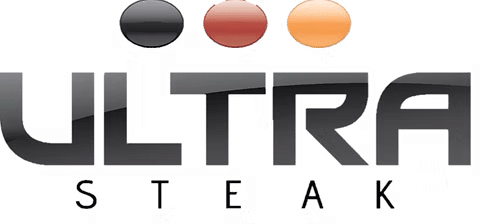This site uses cookies for analytics and to improve your experience. By clicking Accept, you consent to our use of cookies. Learn more in our privacy policy.
Ultra Steak has been a driving force in the restaurant industry since 1979, growing from a single Sizzler location in Indiana to a 23-location, multi-brand powerhouse operating Texas Roadhouse, Aspen Creek Grill, Aspen Tap House, and Slim Chickens. With more than 3,000 employees and a commitment to delivering high-quality dining experiences, Ultra Steak has built a reputation for excellence. However, as the company expanded, managing financial operations, inventory, and performance metrics across multiple brands and locations became increasingly complex. Without an integrated system to track key business data, Ultra Steak struggled to gain real-time financial insights, control costs, and streamline operations effectively.
As Ultra Steak expanded across multiple brands and locations, its outdated and disconnected accounting system made it difficult to track financial performance, control costs, and streamline operations. Until 2019, Ultra Steak had a laundry list of problems with its generic accounting software: Microsoft Great Plains. Each location needed to house and maintain its own server. Gathering and producing reliable data to control costs and boost efficiencies was so time-consuming and error-ridden it was nearly impossible.
We really had nothing in the cloud, nothing integrated, and nothing restaurant-specific.
Kevin O’Bold, Vice President of Finance
Ultra Steak
Without a centralized platform, the company faced inefficiencies that impacted profitability and decision-making. They needed a platform that could help solve the following challenges:
To overcome these operational challenges and drive profitability, Ultra Steak turned to Restaurant365, an all-in-one, cloud-based restaurant management solution designed to streamline back-office operations.
After learning about Restaurant365 at the National Restaurant Association’s annual show, Ultra Steak saw an opportunity to modernize its accounting system, streamline operations, and gain better control over costs. Implementing R365’s cloud-based platform allowed the company to eliminate outdated processes, automate financial reporting, and integrate key business functions seamlessly.
One of the biggest immediate improvements was reducing administrative work across locations. With Restaurant365, Ultra Steak cut store-level administrative hours in half, allowing managers to focus more on operations and guest experience rather than paperwork. The platform’s automated accounting and reporting tools eliminated the need for manual data extraction and reconciliation, ensuring financial metrics were accurate, up-to-date, and easily accessible.
The biggest change overnight was moving from a static system to a dynamic system. I think having the one-stop shop has always been appealing to us, and we know we can integrate more. Restaurant365 has been a total game changer for us, not only from the accounting side but from operations as well.
Kevin O’Bold, Vice President of Finance
Ultra Steak
Ultra Steak transformed its financial operations after implementing Restaurant365 across its 23 locations. One of the most immediate impacts was a 50% reduction in store-level administrative hours, allowing managers to spend more time on operations rather than paperwork.
Prior to using R365 tools Ultra Steak used what it called non-financial metrics or tracking units, which were KPIs like labor and sales data tacked onto profit-and-loss statements. That data was extremely difficult and time-consuming to produce: it needed to be extracted from each of Ultra’s 23 locations and reconciled with banking records before any numbers could be crunched. Each of the company’s stores also had its own administrative assistant who spent 20 hours a week on this and other paperwork like submitting invoices and payroll. Almost immediately after moving to Restaurant365, Ultra immediately cut that time per store down by 35%, and today it’s half what it once was.
The company also leveraged Restaurant365’s inventory cost-tracking tools to identify substantial savings on key ingredients. By analyzing real-time inventory data, Ultra Steak saved $58,000 on ribs and $48,000 on lettuce, helping offset rising food costs and boosting profitability. Additionally, the move to digital payments eliminated over 6,000 paper checks annually, saving thousands in processing costs and streamlining vendor payments.
Our corporate chef or product coach can pull up custom financial reports and actually see item cost trends and say, ‘Wow, it’s been stable for so long, and then boom, I saw this spike. I need to talk to purchasing. We have to figure out a substitute.’
Kevin O’Bold, Vice President of Finance
Ultra Steak
With accurate, actionable financial insights, Ultra Steak improved menu profitability and operational efficiency. The company’s leadership could now make faster, data-driven decisions , ensuring that pricing, portioning, and vendor relationships were optimized for success. As Ultra Steak continues to grow, Restaurant365 remains a critical part of its strategy, providing the tools and insights needed to drive long-term success.
By embracing Restaurant365’s all-in-one platform, Ultra Steak streamlined its financial operations, reduced costs, and empowered its team with real-time data to make smarter business decisions. With greater efficiency, improved cost controls, and seamless system integration, the company is now better positioned for long-term growth. As Ultra Steak continues to expand, Restaurant365 remains a key partner, helping drive profitability and operational excellence across all its locations.

50% reduction in store-level admin hours
freeing up time for managers
$100,000+ saved
on just two food items
Thousands of dollars saved annually
by switching to digital payments.
Discover how you can start achieving savings like these for your business
Restaurant365 brings together accounting, operations, scheduling, and more in a flexible platform—empowering restaurants to choose the solutions they need and scale with confidence.